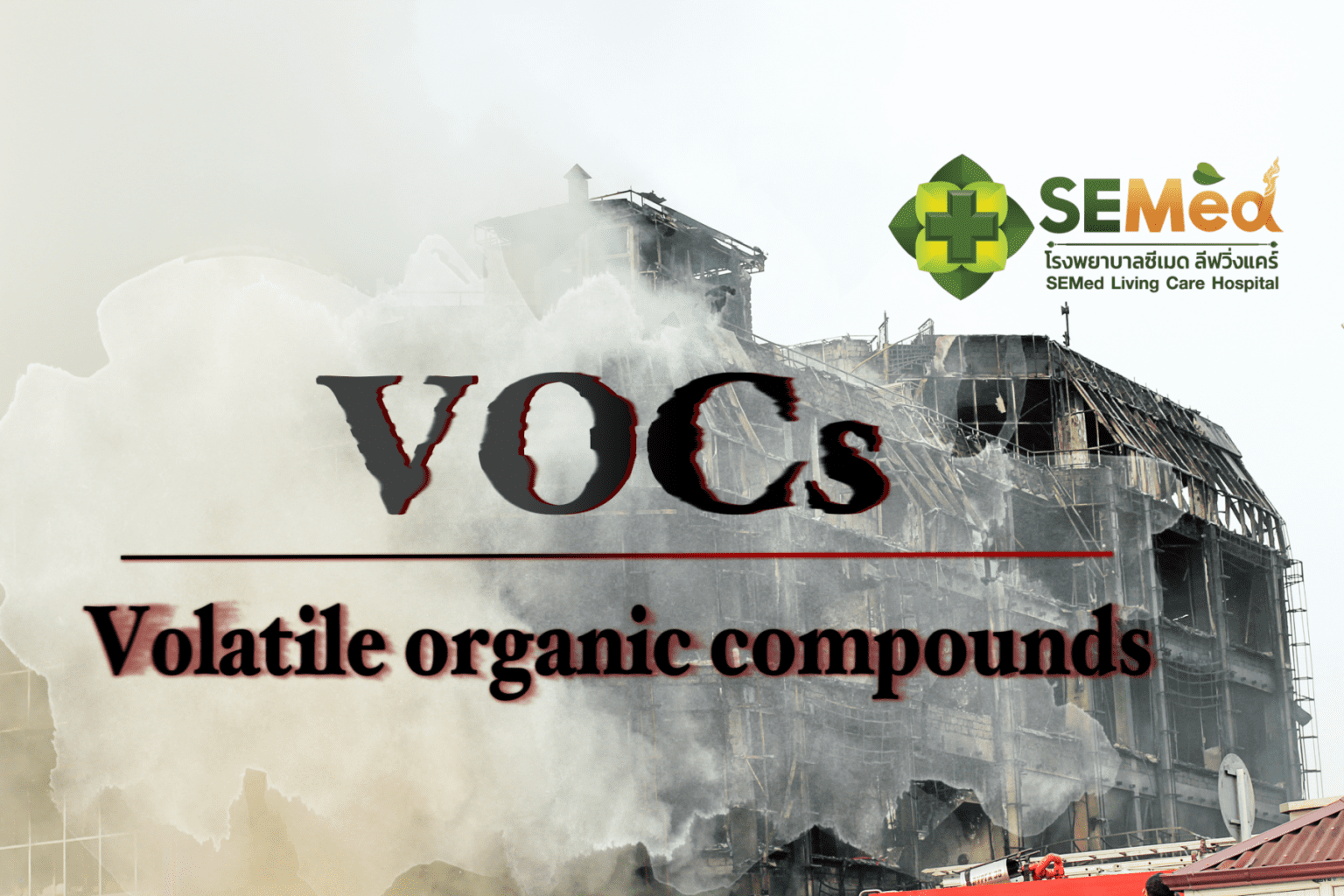
Volatile Organic Compounds (VOCs), commonly known as VOCs, refer to a group of organic compounds that easily vaporize and disperse into the air under normal temperature and pressure. The primary components of these substances include carbon and hydrogen atoms, along with other elements such as oxygen, fluorine, chlorine, bromine, sulfur, and nitrogen.
VOCs in the atmosphere are classified as toxic air pollutants (Toxic Air). In daily life, we are exposed to VOCs through many products such as paint, cigarette smoke, bleach, solvents used in printing, automotive paint shops, industrial plants, dry cleaning agents, hair dyes and perms, pesticides, and substances released from combustion. These chemicals are commonly found in factories that use solvents, such as plastic factories, oil refineries, petrochemical plants, shoe factories, furniture manufacturers, and automobile assembly plants.
VOCs contribute to the formation of ozone in the lower atmosphere, which poses health hazards to humans. These include symptoms such as illness, sore throat, difficulty breathing, eye, cornea, nose, and chest irritation, coughing, and headaches.
Effects of Volatile Organic Compounds:
Acute Toxicity:
Inhaling benzene at high concentrations can cause central nervous system depression, irregular heartbeats, drowsiness, dizziness, rapid breathing, headaches, palpitations, confusion, loss of consciousness, and even death due to respiratory failure.
Chronic Toxicity:
Long-term exposure to low concentrations of benzene can impair blood production, reducing red blood cells, white blood cells, or platelets, weakening the immune system. Symptoms may include mild headaches, nausea, loss of appetite, and stomach discomfort. In severe cases, chronic exposure can lead to fatigue, blurred vision, and difficulty breathing.
Impact on the Immune System:
VOCs can disrupt or damage the immune system, reducing the body’s ability to fight off infections. Studies have shown that people living near toxic chemical waste sites have higher concentrations of these substances in their blood compared to those living further away. Prolonged exposure leads to an increase in these levels, with significant differences. Additionally, individuals living near toxic waste have lower white blood cell counts than those living farther away.
Impact on the Nervous System:
Exposure to VOCs can result in several nervous system issues, including drowsiness, dizziness, depression, and, in severe cases, loss of consciousness.
Reproductive Toxicity:
Women exposed to high concentrations of benzene through inhalation may experience reproductive health issues, including irregular menstruation due to reduced ovary size and difficulty conceiving due to damage to reproductive organs. However, studies in this area remain limited.

Other Adverse Health Effects
Volatile Organic Compounds (VOCs) can impact other bodily systems, including the genetic and hormonal systems. They may cause certain types of cancer and reproductive system disorders, such as infertility and birth defects, including gender dysphoria in children. The extent to which VOCs affect health depends on the chemical properties, the amount of exposure, the biological condition of the body, and other factors.
Exposure to high concentrations of VOCs can lead to central nervous system damage, causing immediate symptoms such as unconsciousness. In cases of long-term exposure to low amounts of VOCs, chronic problems may develop, such as cancer and degeneration of internal organs.
Preventing Harm from VOCs
To reduce exposure to VOCs:
- Avoid using products with high VOC content, and opt for newer products that are VOC-free.
- Avoid using foam or plastic containers to heat food in the microwave.
- Stop smoking.
- Ensure good ventilation at home.
- Use air purifiers.
- Minimize exposure to heavy traffic areas.
Those at higher risk of harm from VOC exposure include people with respiratory issues such as asthma, young children, the elderly, and individuals who are highly sensitive to chemicals. Additionally, those who work in or live near sources of VOCs are also at increased risk.
Source : Bereau of Environmental Health
Thai Health Promotion Foundation

